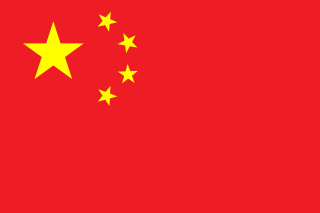 W
WOperation Beleaguer was a major United States military operation led by Maj. Gen. Keller E. Rockey. He commanded 50,000 men of the III Marine Amphibious Corps that deployed to northeastern China's Hopeh and Shantung provinces between 1945 and 1949. The main objectives of the operation were the repatriation of more than 600,000 Japanese and Koreans who remained in China after the end of World War II, as well as the protection of American lives and property in the country. Over nearly four years, American forces engaged in several skirmishes with the Communists while the Americans successfully evacuated and repatriated thousands of foreign nationals. The United States government's attempt at mediating a peace treaty between the opposing Nationalist and Communist forces was however unsuccessful.
 W
WThe Second Sino-Japanese War (1937–1945) was a military conflict that was primarily waged between the Republic of China and the Empire of Japan. The war made up the Chinese theater of the wider Pacific Theater of the Second World War. The beginning of the war is conventionally dated to the Marco Polo Bridge Incident on 7 July 1937, when a dispute between Japanese and Chinese troops in Peking escalated into a full-scale invasion. This full-scale war between the Chinese and the Empire of Japan is often regarded as the beginning of World War II in Asia. In 2017 the Ministry of Education in the People's Republic of China decreed that the term "eight-year war" in all textbooks should be replaced by "fourteen-year war", with a revised starting date of 18 September 1931 provided by the Japanese invasion of Manchuria. According to historian Rana Mitter, historians in China are unhappy with the blanket revision, and the Republic of China did not consider itself to be continuously at war with Japan over these six years. The Tanggu Truce of 1933 officially ended the earlier hostilities in Manchuria while the He-Umezu Agreement of 1935 acknowledged the Japanese demands to put an end to all anti-Japanese organizations in China.
 W
WThis article lists the results for the China national football team between 1913 and 1949. Scores are listed with the Chinese score first, followed by the opponents' score.
 W
WZhang Dinghuang ; 1895–1986), also known as Zhang Fengju was a Chinese-American antiquarian, linguist, literary critic, poet, and translator. He was born in Nanchang and an expert in antique manuscripts. Zhang was a supporting but key figure of the rich 20th century Chinese literary movements.
 W
WThe Japanese repatriation from Huludao refers to sending back to Japan the Japanese people who were left in Northeast China after the end of World War II in 1945. In this operation, done by the American forces' ships under the auspices of the Republic of China government, over one million Japanese were carried back to their homeland, from 1946 to 1948.
 W
WThe National Revolutionary Army, sometimes shortened to Revolutionary Army (革命軍) before 1928, and as National Army (國軍) after 1928, was the military arm of the Kuomintang from 1925 until 1947 in the Republic of China. It also became the regular army of the ROC during the KMT's period of party rule beginning in 1928. It was renamed the Republic of China Armed Forces after the 1947 Constitution, which instituted civilian control of the military.
 W
WThe Nationalist government, officially the National Government of the Republic of China, also known as Second Republic of China but most commonly known simply as the Republic of China, refers to the government of the Republic of China between 1 July 1925 and 20 May 1948, led by the Kuomintang. The name derives from the Kuomintang's translated name "Nationalist Party".
 W
WThe Amdo- Ma clique conflicts (1917–1949) were a series of military campaigns against unconquered Amchok and Ngolok (Golok) tribal Tibetan areas of Qinghai (Amdo), undertaken by two Hui commanders, Gen. Ma Qi and Gen. Ma Bufang, on behalf of the Beiyang and Kuomintang governments of the Republic of China. The campaigns lasted between 1917 and 1949.
 W
WThe Second Sino-Japanese War (1937–1945) was a military conflict that was primarily waged between the Republic of China and the Empire of Japan. The war made up the Chinese theater of the wider Pacific Theater of the Second World War. The beginning of the war is conventionally dated to the Marco Polo Bridge Incident on 7 July 1937, when a dispute between Japanese and Chinese troops in Peking escalated into a full-scale invasion. This full-scale war between the Chinese and the Empire of Japan is often regarded as the beginning of World War II in Asia. In 2017 the Ministry of Education in the People's Republic of China decreed that the term "eight-year war" in all textbooks should be replaced by "fourteen-year war", with a revised starting date of 18 September 1931 provided by the Japanese invasion of Manchuria. According to historian Rana Mitter, historians in China are unhappy with the blanket revision, and the Republic of China did not consider itself to be continuously at war with Japan over these six years. The Tanggu Truce of 1933 officially ended the earlier hostilities in Manchuria while the He-Umezu Agreement of 1935 acknowledged the Japanese demands to put an end to all anti-Japanese organizations in China.
 W
WThe Second United Front was the alliance between the Chinese Nationalist Party and the Chinese Communist Party (CCP) to resist the Japanese invasion during the Second Sino-Japanese War, which suspended the Chinese Civil War from 1937 to 1941.
 W
WThe Yan'an Rectification Movement, also known as Zhengfeng or Cheng Feng, was the first ideological mass movement initiated by the Chinese Communist Party (CCP), going from 1942 to 1945. The movement took place at the communist base at Yan'an, a remote and isolated mountainous area in northern Shaanxi, after the communists' Long March. Though it was during the Second Sino-Japanese War, the CCP was experiencing a time of relative peace when they could focus on internal affairs.